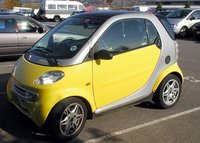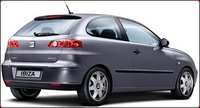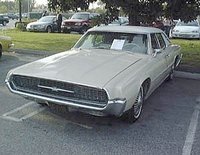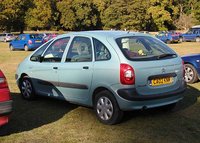Car classification
|
|
Car classification is a somewhat subjective subject, as many vehicles fall between classes or even outside all of them. Not all car types are sold in all countries and names differ in some cases between British and American English. The following are commonly used classifications within the Wikipedia. Where applicable, the relevant EuroNCAP classifications are shown.
| Contents |
Microcar
Straddling the boundary between car and motorbike, these vehicles have engines of only a few hundred ccs, typically seat only 2 people, and are generally unorthodox in construction. Many only have three wheels. They are especially associated with post-war Europe, where their appearance led them to called Bubble cars. A contrast to the traditional microcar is the modern Smart.
Examples:
- CLEVER
- Fend Flitzer
- Messerschmitt microcar
- Isetta
- Goggomobil
- Heinkel microcar
- Trojan (automobile)
- Smart
- Electric Sparrow (http://www.sparrowelectriccars.com/)
Supermini/Sub-compact
This class, known as superminis in Europe and sub-compacts in North America, covers the next smallest vehicles. These vehicles are the smallest cars widely sold in the North American market. They are typically hatchbacks with two or four doors and are designed to seat two adults and two children. In Japan, a specially restricted type of these called the keicar is a popular class of car.
Examples:
- Austin Metro
- Chevrolet Aveo
- CitroŽn C1
- Ford Fiesta
- Honda Jazz
- Mini
- Nissan Micra
- Peugeot 107
- Suzuki Alto
- Toyota Aygo
- VW Polo
This category is equivalent to the EuroNCAP class 'Superminis'
Family Car
A medium size vehicle, usually with four doors. Typical layouts include hatchback, sedan (UK:saloon) or station wagon (UK:estate). This class make up the largest percentage of vehicles in most countries.
Small examples (also know as compacts):
- Audi A4
- BMW 3-series
- Ford Escort
- Mercedes-Benz C-Class
- Peugeot 306
- SEAT Leůn
- VW Golf (hatchback)
- VW Bora/Jetta (sedan built on Golf platform)
This category is equivalent to the EuroNCAP class 'Small Family Cars'
Mid-size example:
- Audi A6
- BMW 5-Series
- Ford Mondeo
- Honda Accord
- Mercedes-Benz E-Class
- Renault Laguna
- Jaguar S-Type
- Volkswagen Passat
- Volvo V70
This category is equivalent to the EuroNCAP class 'Large Family Cars'
Large examples:
- Audi A8
- BMW 7-series
- Chrysler 300
- Holden Commodore
- Infiniti Q45
- Jaguar X-Type
- Lexus LS 430
- Mercedes-Benz S-Class
This category is equivalent to the EuroNCAP class 'Executive Cars'
Hot Hatch
The Hot hatch is a small performance vehicle based on standard superminis or small family cars, with improved performance, handling and styling. Hot hatches make up a large section of the market for superminis and smaller hatchbacks.
Examples:
- VW Golf GTI
- CitroŽn Saxo VTR
- Ford Focus RS
Personal luxury car
Generally confined to the U.S. market, the PLC was an upmarket, two-door, four to six seater vehicle which was usually mechanically related to the manufacturer's four-door lineup but had its own body, name, and image. They were sold as luxury cars with some of the style and performance of sports models. This type of vehicle has nearly vanished from the market.
Examples:
Sports Car
Honda_NSX_red.jpg
This small lightweight class combines performance and handling. Often inspired by racing vehicles. This class ranges from sporty vehicles such as the MX-5 to derivatives of true racing thoroughbreds such as the Lotus Elise.
Examples:
Muscle Car
The Muscle car is a peculiarly American type of sports car, popular from the 1960s until a combination of spiralling insurance costs and the 1973 energy crisis largely killed off the category. A smaller offshoot, the Pony car, still exists in the form of the Ford Mustang. The epitome of brute-force power, these cars shoe-horned giant engines into mid-sized cars (by the then US standard) which were often, from the factory, inadequate to handle the power and performance; handling was subordinate to straight-line acceleration.
Examples:
- Chevrolet Camaro
- Chevrolet Chevelle
- Dodge Charger
- Mercury Cougar
- Plymouth Barracuda
- Plymouth Road Runner
- Plymouth Superbird
- Pontiac GTO
- Holden Monaro (Australia)
Grand Tourer
Jaguar.xk8.car.750pix.jpg
Larger than a sports car, these high performance vehicles typically have a 4 seat or 2+2 layout.
Like supercars, GTs can be extremely expensive, and often combine modern technology with hand-built construction.
Examples:
Supercar
An ultra-high performance car, typically very expensive and luxurious or exceptionally fast. Supercars typically contain cutting-edge technology, and can be assembled partly or completely by hand.
Examples:
- Aston Martin Vanquish
- Chevrolet Corvette
- Dodge Viper
- Ferrari 360
- Ford GT
- Lamborghini Murciťlago
- McLaren F1
- Plymouth Superbird
- Porsche 959
See also: List of supercars
Executive Car
Also known as a luxury saloon, or in the U.S., simply luxury car. These vehicles are rarely hatchbacks or coupes, but more typically four-door sedan/saloon cars. They are typically very large, very powerful and very luxurious. This also makes them very expensive.
This category is equivalent to the EuroNCAP class 'Executive Cars'
Examples:
SUV
Also know as an off-roader, four-wheel-drive, 4x4 or 4 by 4. There are two general trends among SUVs - real off-roaders, usually utility vehicles with a truck chassis and LUV, Luxury Utility Vehicle with high specification body and interior, most with a moncoque chassis. Their offroad capability is often compromised by a low ground clearance. However, Traction Control rather than complex differential arrangements can give them good capability in many offroad situations, particularly sand and graded roads.
SUVs have severe problems with crash incompatibility, and are typically of more primitive design than smaller cars. Combined with serious handling issues in some vehicles due to the high centre of gravity, this makes them a dangerous vehicle in inexperienced hands.
A new category of Crossover SUVs are based on car chassis and mitigate many of the criticisms of truck-based SUVs.
Soft-roaders
Examples:
- Mercedes-Benz M-Class
- BMW X5
- Volvo XC90
- Vauxhall Frontera
- Chevrolet Suburban
- Ford Bronco
- Ford Explorer
- Lincoln Navigator
This category is partially equivalent to compact suvs and the EuroNCAP class 'Small Off-Roaders'
Off-roaders
Hmmwv_model.jpg
Examples:
This category is partially equivalent to the EuroNCAP class 'Large Off-Roaders'
Minivan
Also known as multi-purpose vehicles (MPV) and people carriers, this class of cars resemble family cars but are taller with a shorter hood (bonnet) and are designed for maximum practicality. They come in two sizes. The larger class of cars almost always have more seats than conventional family cars, usually seven or eight in three rows. The smaller class of cars most commonly have five seats but some have six or seven in two or three rows.
The increased height of these vehicles above a family car improves visibility for the driver (while reducing visibility for other road users) and may help access for the elderly or disabled.
Minivans suffer from poor fuel economy in comparison with lower profile vehicles, due to their increased air resistance and mass. In addition they have problems with crash incompatibility with smaller vehicles.
Smaller Minivans
Smaller minivans are typically a medium size car with the cabin space stretched vertically to resemble a minivan.
Smaller minivans suffer less from some of the problems associated with their full size brothers, such as fuel economy and crash incompatibility, but do not always have the extra seats or storage space that full size minivans have.
Examples:
This category is partially equivalent to the EuroNCAP class 'Small MPVs'
Full Size Minivans
Larger minivans offer more seats and increased load capacity over a family or executive car. They are typically half way between a car and a minibus, and are usually restricted to 8 seats, as many countries license vehicles over 8 seats differently from cars.
Examples:
- Renault Espace
- Chrysler Voyager
- Hyundai Trajet
- KIA Sedona
- Mitsubishi Space Wagon
- Nissan Serena
- Peugeot 806
- Fiat Multipla
- Dodge Caravan
This category is partially equivalent to the EuroNCAP class 'MPVs'
Other
Recreational vehicle
Vintage car
Brass Era car
See also
External links
- EuroNCAP classifications (http://www.euroncap.com/content/safety_ratings/introduction.php)pl:Klasa samochodu







